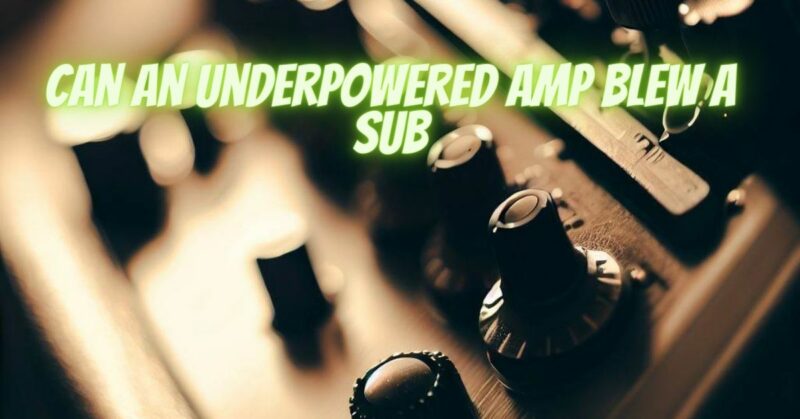The relationship between amplifiers and subwoofers is crucial in an audio system, and finding the right balance of power is essential for optimal performance and safety. One common concern among audio enthusiasts is whether an underpowered amplifier can blow a subwoofer. In this article, we will explore the potential risks, causes, and preventive measures to help you maintain your subwoofer’s longevity and performance.
Understanding Underpowered Amplifiers
An underpowered amplifier is one that delivers less electrical power (wattage) to the connected subwoofer than the subwoofer’s power handling capacity can safely handle. The power handling capacity of a subwoofer is typically specified in terms of RMS (Root Mean Square) power, indicating the continuous power the subwoofer can handle without risking damage.
Potential Risks of an Underpowered Amp
While underpowered amplifiers do not inherently pose an immediate threat to subwoofers, they can contribute to several issues that may eventually lead to subwoofer damage:
- Overdriving the Amplifier: When using an underpowered amplifier, users may turn up the amplifier’s volume to compensate for the lack of power. This can cause the amplifier to be pushed beyond its limits, leading to clipping and distortion.
- Clipping and Distortion: Clipping occurs when an amplifier is overdriven and cannot accurately reproduce the audio signal. This distortion can include harsh, unpleasant sounds and can be harmful to subwoofers.
- Overexcursion: Underpowered amplifiers can send distorted signals to the subwoofer, causing overexcursion. This means that the subwoofer’s cone may move excessively and potentially damage its components.
- Reduced Dynamic Range: An underpowered amplifier may not effectively reproduce both quiet and loud bass passages, resulting in a reduced dynamic range in audio content.
Preventive Measures
To prevent an underpowered amplifier from causing damage to your subwoofer, consider the following measures:
- Matching Specifications: Ensure that the amplifier’s power output closely matches or slightly exceeds the subwoofer’s RMS power handling capacity. This helps prevent underpowering and reduces the risk of distortion.
- Proper Gain Setting: Regardless of whether you slightly overpower or match the subwoofer’s power handling, set the amplifier’s gain (input level) correctly to avoid distortion and ensure clean bass reproduction.
- Use a High-Pass Filter: A high-pass filter can be used to block low-frequency signals that the subwoofer is not designed to handle, further protecting it from damage caused by underpowered amplifiers.
- Listening Tests: Conduct listening tests with various audio content to fine-tune the subwoofer’s settings. Adjust the crossover frequency, volume, and phase to optimize the bass experience.
While an underpowered amplifier may not immediately blow a subwoofer, it can contribute to various issues such as distortion, clipping, and overexcursion that may eventually lead to subwoofer damage. To ensure the longevity and performance of your subwoofer, it’s crucial to match the amplifier’s power output to the subwoofer’s specifications, set the gain correctly, and use protective measures like high-pass filters when necessary. By taking these steps and following manufacturer guidelines, you can enjoy powerful and clean bass without risking damage to your subwoofer.


